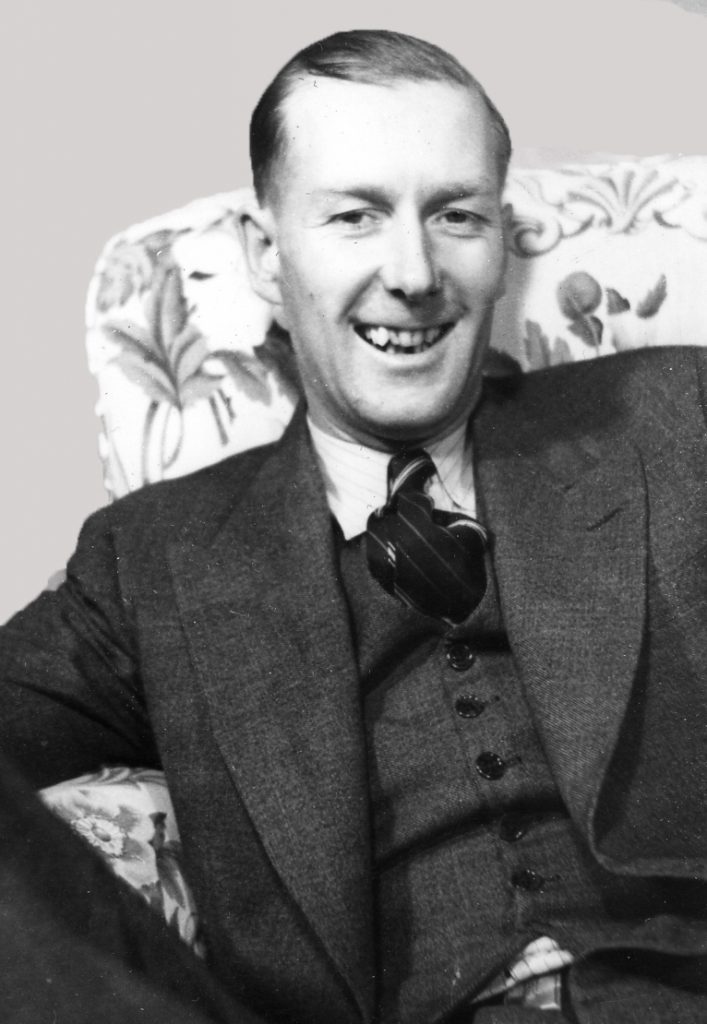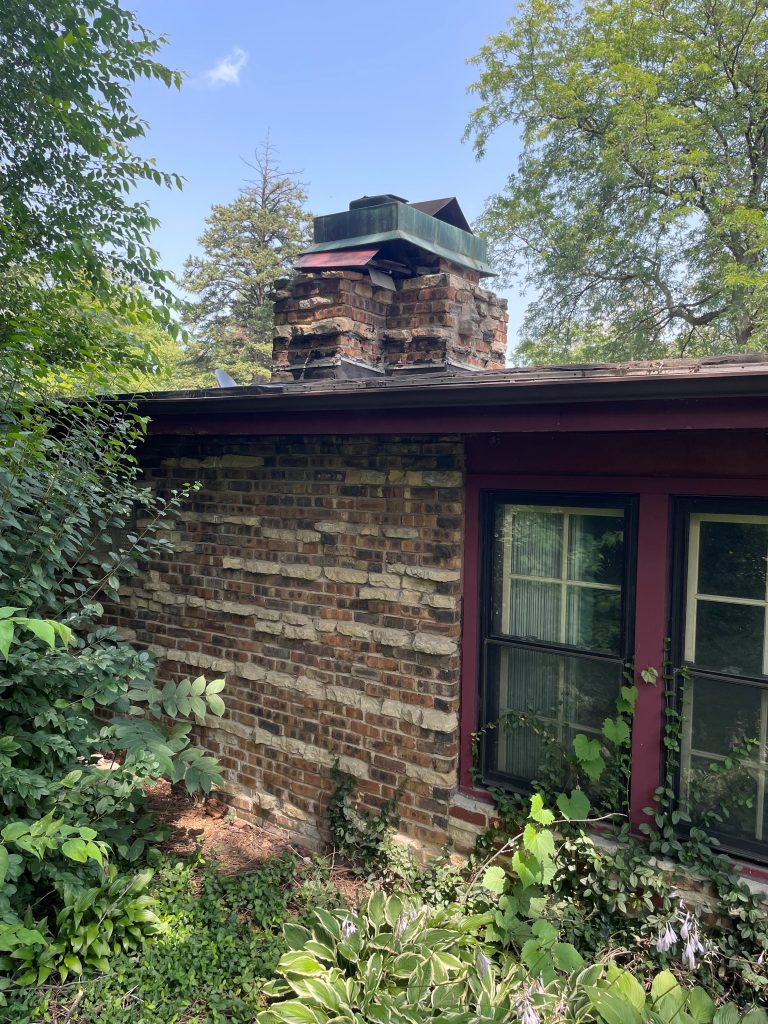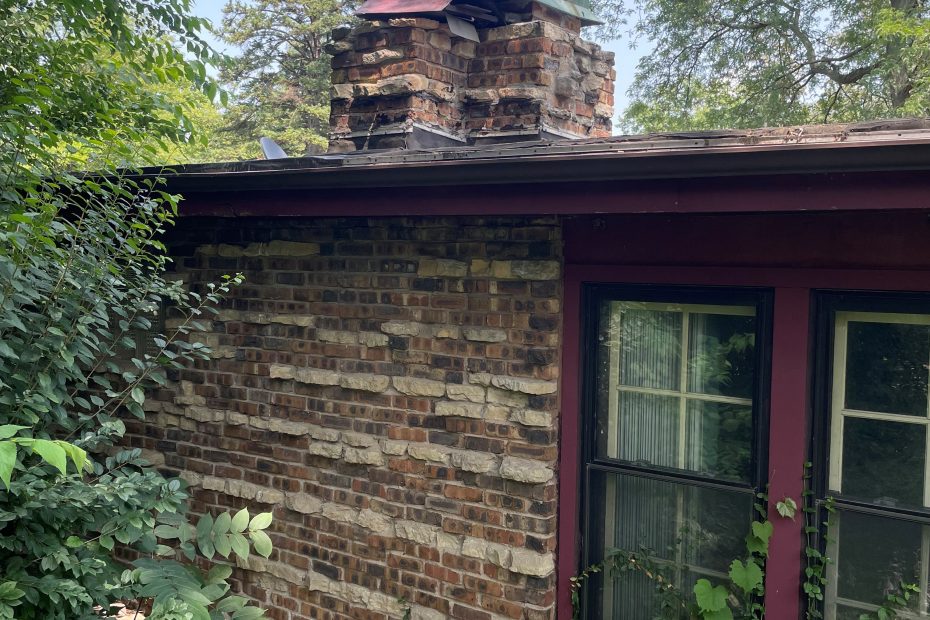Wilfred and Olga Brynjolfsson House, 1524 South Summit Avenue, Villa Park, IL
Built 1951-52
Please call The Kenny Team at Longwood Real Estate Company for showings.

As World War II ended, many of Chicago’s suburbs swelled in both real estate development and population growth. Farmland in areas around Chicago’s existing suburbs began to disappear, as owners subdivided lands into smaller residential lots. Increased automobile ownership, the building of expressways, suburban business relocation, and the availability of low cost FHA and VA insured homebuilding loans all contributed to mushrooming growth in Chicago’s suburbs. Illustrative of this substantial growth is Villa Park, whose population jumped 194% from 8,821 to 25,891 residents between 1950 and 1970.q
At the southern edge of Villa Park, airline employee John Stuart Riordan (b. 21 September 1908, Erie, IL – d. 30 January 1968, Villa Park, IL) began subdividing his family’s estate into two subdivisions for further development. The majority of Post-World War II residences built in the two Riordan Subdivisions are traditional home designs in modest materials. Yet, one house on Summit Avenue is of architectural interest.
Rare Late Prairie Architectural Gem built 1951-52
The Wilfred and Olga Brynjolfsson House, built 1951-52[i] at 1524 South Summit Avenue is likely Villa Park’s only local residential example of Late Prairie design built in the post-World War II era. It is encapsulates mid-century development and historic architecture in Villa Park. Amidst a period of conservatism and traditionalism, Chicago’s avant-garde architects and builders designed and constructed a number of residences in modern styles. Homeowners of these modern designs were progressive clients captivated by the machine age and new technologies.
When constructing their second home in what is now Villa Park (then Elmhurst) for their three-person family, Wilfred and Olga Brynjolfsson discarded historic precedent. Wil, a building contractor and bricklayer with his family’s business I. Brynjolfsson & Sons of Wood Dale, IL, built and designed his own modern home. His wife, Olga, a connoisseur of architectural and home magazines, selected much of the interior plan and features.
I. Brynjolfsson & Sons, Builders
The Wilfred and Olga Brynjolfsson House is one of very few residences built by I. Brynjolfsson & Sons. Between 1938 and the late 1960s when the family business was discontinued, the company was best known for constructing schools, churches, and governmental buildings in Chicago’s western suburbs. Generations of Brynjolfssons have been involved in the building trades first as stone masons in Northern Iceland, continuing in the skilled building trades after immigration to Winnipeg, Manitoba, Canada, and then finally settling in the United States in the mid-1920s.
Of the company’s known residential designs, Father Ingi Brynjolfsson built his own home in 1938 at 214 Harvey Avenue. Unfortunately, this home has been extensively remodeled. Wilfred Brynjolfsson’s first home in Villa Park, built in 1948 at 372 Riordan, remains today and features a stone front laid by his highly-skilled stone mason brother, Ernest “Krink” Brynjolfsson. Ernest’s own home is one of a cluster of three homes on the 300 Block of Ethel Street in Lombard, IL built in the late 1950s. The other two were Wilfred’s new home (337 Ethel) after selling the Summit Street home to new owners C.M. and O.A. Weese, and a speculative home that the company put up for sale.
Wil Brynjolfsson, Bricklayer and Builder

Wilfred Brynjolfsson (b. 3 January 1912, Winnipeg, Manitoba, Canada – d. 8 May 1986, Redding, CA) was an independent thinker, looking to non-traditional, modern approaches to building. He held two patents in masonry construction, one for adjustable wall ties and one for reversible wall ties. He later sold his inventions to Dur-O-Wal of Cedar Rapids, IA and became a regional sales leader for the products. Wil was known to push the envelope for “better” architectural design in Chicago’s mid-century suburbs, in what he liked to call “bungalow busting.” His second home in Villa Park succeeded, as it clearly stands out as a tastefully modern design hugging its traditional suburban streetscape.
Late Prairie Architectural Style
The Brynjolfsson House at 1524 South Summit Avenue is a one-story, mid-20th century modern design in the Late Prairie style. Late Prairie is an outgrowth of the early modern Prairie School architectural style created by Frank Lloyd Wright and his followers. Although the original Prairie style was generally popular from about 1900 through 1920, some influences from the style can be seen in buildings constructed from the 1940s and later. These mid-century designs are found particularly in Chicago’s suburbs where Wright’s and his follower’s influences continued. Late Prairie has been used to describe buildings whose form is low and horizontal, yet, unlike period modernist styles such as International or Miesian, make use of natural materials such as wood siding and stone that Chicago’s Prairie School architects preferred. Additionally, the use of brick, broad overhanging eaves, block forms, a prominent chimney and fireplace, and cantilevered elements are characteristic of the Late Prairie style.
Mid-century modern in its geometric form, the Brynjolfsson House has a series of flat roofs and broad overhangs. Sitting directly at grade on a concrete slab with no basement, the unusual coursed stone and clinker brick walls rise up from its site. Wil, as a bricklayer by trade, made the wall material selections himself, likely selecting clinker bricks for their affordability and then experimenting with alternating material coursing on his own home’s design. He came up with an honest solution to affordability while keeping in a modern aesthetic.

Wil and his son, Kenneth, selected each of the flat limestone pieces for the exterior walls from a quarry in Lemont and brought them on their construction truck to the Summit Avenue site.[ii] Wil also selected clinker brick for the walls. Clinker bricks are irregularly shaped or unexpectedly colored bricks that came too close to the kiln fire. Brick manufacturers typically discarded clinker bricks since they did not meet uniform standards, and priced them accordingly. Yet, some architects and builders found their unusual colors and textures appealing and selected clinkers to add character to a wall surface. The wall texture created from the alternating courses of clinker brick and stone on the Brynjolfsson House is stunning, adding a naturalistic feel and horizontality suggestive of Late Prairie design.
The plan of the home, like others of its era, splits public spaces from the private spaces on opposite ends of the home. At the far end is a one-car garage with original multi-paneled, overhead wood door and carport overhang. A breezeway, now enclosed, separates the garage from the interior living spaces. Its living room exhibits notable mid-century modern features. The focal point of its open living room plan is a massive brick fireplace and cantilevered hearth, with stacked brick coursing above and other unusual brick coursework surrounds. Beamed ceilings draw eyes upward. Much of the original linoleum tiles remain, including the diagonally laid living room floor and primary bedroom tile with central medallion. Olga Brynjolfsson’s favorite color was turquoise, conspiciously reflected in the flooring choices. Unfortunately, the tile is difficult to appreciate today in its well-worn condition. Although all interior wall surfaces are covered with a mix of wood paneling and drywall, underneath lies original interior walls of painted, four inch concrete block.[iii] The majority of windows are replacements of the original metal casement and paneled windows. The square footage of the one-story, two-bedroom design notably reflects the Brynjolfsson family’s requirements. Lastly, Wilfred Brynjolfsson’s skillful bricklaying is clearly on display in his home’s exterior walls, likely in the hidden concrete block interior walls, and fireplace treatment.
The Brynjolfsson House is architecturally significant as a rare Late Prairie style residence in Villa Park. It tells the story of a forward-thinking home builder and his refined owner spouse, who experimented with modern materials and design to create their own affordable home in the Post World War II era. Currently up for sale, the home craves a steward who appreciates its architectural significance and is willing to sensitively rehab it to meet’s today’s homeowner needs.
[i] The jump in total assessed value of the North 100 feet of Lots 15, 16, 17 in Riordan’s Subdivision Unit 2 from 7430 in 1951 to 11,590 in 1952 indicates construction. From DuPage County Collectors Books (online materials), 1951 Book 61, p. 44 and 1952 Book 61, p. 50.
[ii] Oral history via telephone interview with Ken Brynjolfsson, Saturday, July 22, 2023.
[iii] Ibid.
